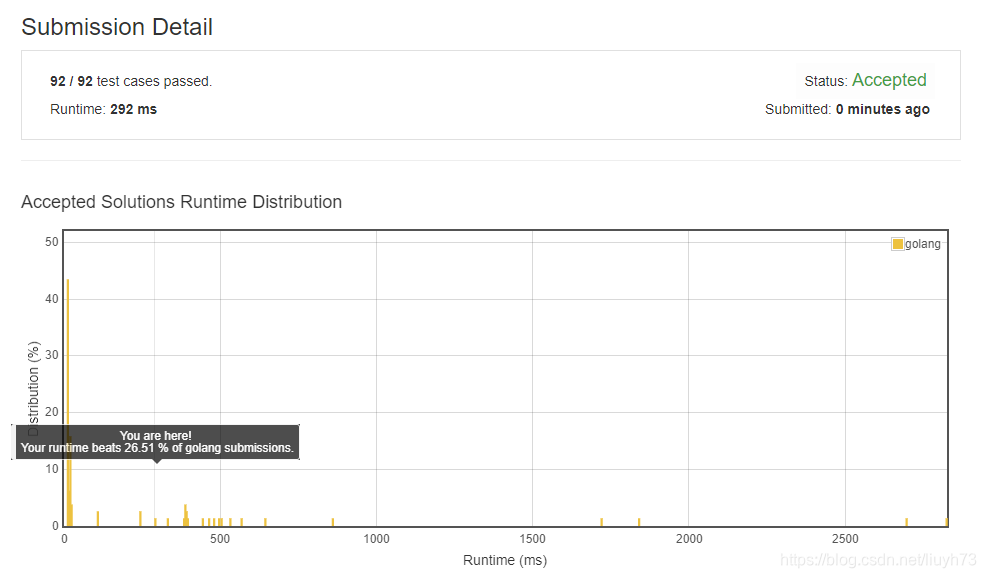leetcode | 45. Jump Game II
阿新 • • 發佈:2018-12-09
題目
Given an array of non-negative integers, you are initially positioned at the first index of the array.
Each element in the array represents your maximum jump length at that position.
Your goal is to reach the last index in the minimum number of jumps.
Example:
Input: [2,3,1,1,4]
Output: 2
Explanation: The minimum number of jumps to reach the last index is 2.
Jump 1 step from index 0 to 1, then Note:
You can assume that you can always reach the last index.
思路與解法
題目要求我們找到最少的步驟到達列表末尾,我們可以採用動態的思想:dp[i]表示到大索引i時所需的最少步驟。則狀態轉移方程為:
dp[i] = min(dp[i], dp[i-1]+1)
在計算得到dp[i]之後,我們需要更新位置i所能到達的所有後續位置的步驟數。
for j=i+1; j<=i+nums[i]; j++ {
dp[j] = min(dp[j], dp[ 程式碼實現
const INT_MAX = int(^uint(0) >> 1)
// 自定義函式返回a,b中的較小值
func min(a, b int) int {
if a < b {
return a
}
return b
}
func jump(nums []int) int {
length := len(nums)
dp := make([]int, length)
// 可以從位置0直接到達的位置初始化為1,不可到達的位置的初始化為無限大
for i:=1; i<length; 執行結果

